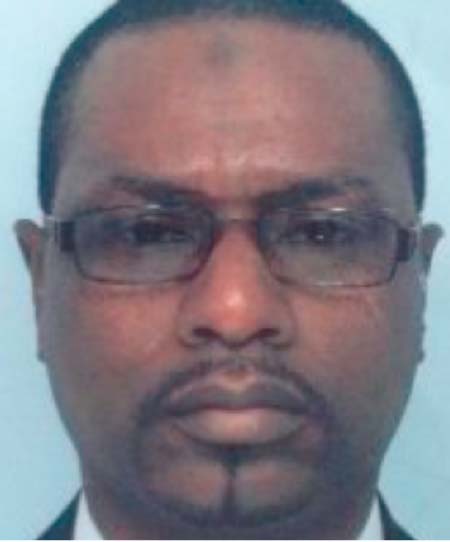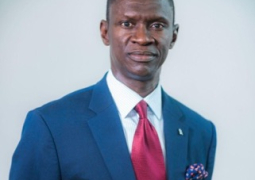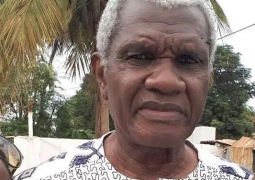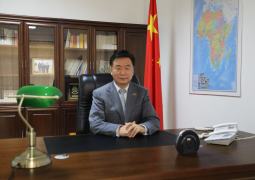
Jammeh, Burama L. J. (2012) Curriculum Policy Making: A Study of Teachers' and Policy-makers' Perspectives on The Gambian Basic Education Programme. PhD thesis, University of Sheffield.
This thesis aims to critically understand how teachers and policymakers in The Gambia, a former British colony, perceive the curriculum policy-making process. The complexity of curriculum policy issues requires this study to draw on multiple theoretical underpinnings to gain insight into curriculum policy relating to Basic Education in The Gambia. Therefore, curriculum theories and education policy literature, including the issues of globalisation and national policy, are engaged to frame the data collection, analysis and findings. Data obtained from semi-structured interviews are used to analyse the perceptions. The thesis critically examines the historical and contemporary approaches to curriculum policymaking, identifies the key policy players and analyses their significance in the construction of the national curriculum policy. The thesis further investigates experiences and views about the policy in practice and recommends a new approach to curriculum policy making. Two levels of the curriculum policy-making process are found to be influential in The Gambia: the international (global) and the national and local levels. While the global influences are profound on the strategic education policy, the national and local effects are stronger than the global impact on the operational policy (curriculum plans). The thesis argues that policy is more than just received and implemented as given. Although compliance incidences are noted, curriculum policy guidelines developed by the Ministry of Education are continually interpreted, sometimes misunderstood and/or resisted by the teachers. Gaps between policy and implementation result from the resource constraints and the practitioners’ influences and impacts. A curriculum policy reform is recommended, recognising the centrality of teachers in the curriculum process, promoting the empowerment of the teachers and building their capacity to engage in informed policy mediation and to enable them to put their own policy into practice.
Author
Dr Burama L. J. Jammeh is a Curriculum Specialist: Expert in education research, curriculum development and evaluation. He was the Director of Curriculum at the Ministry of Basic and Secondary Education.
Except
Education Policy 2004 - 2015
In developing the previous policy, public consultation on policy matters was through a National Conference. However, the consultation process in developing the current Education Policy 2004 - 2015 took another dimension. The policy making process took place ―in a variety of ways, to include children as well as adults; illiterate as well as literate members of the society; government departments; civil society and private sector representatives‖ (p 9). Forums were organised in both rural and urban parts of the country to discuss the strengths and weaknesses of the previous education policy (1988 – 2003) with a view to developing a new education policy. These included television and radio programmes, children‘s forum and regional conferences to solicit views and recommendations which provided the basis for further discussions at the national conference on education.
As a follow-up to the public consultations, a team produced various drafts of the policy text. The fourth draft was presented to the stakeholders across all regions of the country for validation at regional validation workshops before the final draft was submitted to the Cabinet and then to the House of Parliament in The Gambia. The concept of BE was embraced in the previous policy has been reinforced by this policy.
The policy defines BE in terms of school structures or institutions through which BE is offered and focuses on various strategies of providing BE to all eligible children. However, the policy seems to be silent over clarifying the concept of BE in terms of curricula requirements. The courses in the BE programme are not indicated in the policy as was the case for primary education in the previous policies or for the senior secondary schools in the current one. However, the policy proposes ―on-going review and upgrading of the curricula across basic and secondary levels based on explicit learning objectives upon which assessments will be more reliably based‖ (p 16). As such, between 2008 and 2010, a subsidiary policy known as ‗Curriculum Framework for The Gambia‘ was developed by a Gambian team with support from UNESCO.
The Curriculum Framework specifies and compartmentalises learning areas into numerous subjects, allocates percentages of teaching periods to the subjects and groups subjects into core and none core subjects. My own view, and indeed argument in this thesis is that the subject compartmentalisations are numerous, too specific and discriminatory (core and non
core) , has not taken into account the reality that schools have varying resources and become what Winter (2011) refers to as one-size-fits-all curriculum.
In summary, I have so far explored the evolution of policy making in The Gambia from the colonial era to today. The process started by Government engagement of foreign experts to carry out studies on policy matters whose reports were discussed, amended (in some instances) and approved by the Legislative Council. Contested views, conflicts, struggles, and differential power relations over curriculum matters have also been highlighted. In addition, tensions between different curricula orientations especially vocational and academic oriented curricula are noted. The discussion shows that the link between education and the knowledge economy discussed in Chapter 3 existed since the colonial period.
From an engagement of a single expert which characterised policy marking in the colonial period, policy making evolved and incorporated the international and national experts as well as the general public. The policy approval remains the responsibilities of the Cabinet and the House of Parliament.
[…]
Education Policy 1988 -2003
The end of the 1986 policy was a period when the country faced serious economic crises and in the 1985/86 fiscal year, the government with the assistance from the International Monetary Fund (IMF) and the World Bank formulated and implemented policies and programmes under the Economic Recovery Programme with a view to correcting the economic imbalance (Jammeh, 1993). This coincided with period when economic analysts such as Psacharopoulos and Woodhall (1985) applied concepts such as ‗efficiency‘ and ‗equity‘ to education. In his publication on a case study conducted in Colombia Psacharopoulos (1985) indicates that a diversified curriculum has failed to increase the employment opportunities of school leavers from the vocational stream over those from the academic stream. These findings may have been upheld by the donor agencies leading to the lack of funding of The Gambian Secondary Technical School programme and to its subsequent failure. A policy for the period 1986 – 1991 was drafted by the Ministry of Education but was discarded for a reason that all stakeholders should have taken part in the policy making process:
In the context of a democratic set-up the planning process should …make room for and accommodate wide public debate so that the resultant policies do not only reflect the technical expertise of the planners and the administrators but also take into account the legitimate concerns and intimate convictions of the members of the general public (Ministry of Education, Youth, Sports and Culture, 1987, p 2).
Policy making, neither as a single expert-led nor a Ministry of Education affair but as public participation with a group of experts, characterised the development of the Education Policy 1988- 2004. The first National Conference on Education was held in The Gambia from September 21st– 26th, 1987 with over 250 participants including teachers, students, administrators, politicians and representatives from various organisations. The conference was facilitated by local resource persons and international experts mainly from UNESCO and the Commonwealth Secretariat (ibid). It is questionable whether the decision to have an open public debate was out of a genuine concern for public participation or pressure from the World Bank and IMF. Nevertheless, the term ‗BE‘ featured in two of the presentations (directors of education and curriculum) at the conference but it was not very clear how or what it was going to mean. For example, the conference papers interchanged the terms ‗BE‘ and primary education. In this regard, it may be argued that the policy making was at the time when BE was already on the international agenda. However, the policy making was said to be based on the findings and recommendations of the national conference and on the subsequent discussions of the Ministry of Education officials ―especially in respect of the financial implications of alternative policy option‖ (Ministry of Education, Youth, Sports and Culture, 1988, p 4). The policy text was developed by staff at the Ministry of Education and then Cabinet approval followed by the Parliamentary endorsement process.
Comparing the Education Policy 1988 – 2003 and the previous policies, I observe the language of economics such as cost-effective use of resources for education and the management of the educational system emerged for the first time in policy agendas. This might be linked to the involvement of IMF and the World Bank in the country‘s economic recovery programme I noted above.
The policy proposes curriculum for Grades 1-6 to include three predominant national languages as medium of instruction for Grades 1 to 3 and taught as a subject from Grade 3 onwards:
English, which should be taught as a subject from Grade 1 and becomes the medium of instruction from Grade 3; Mathematics; General science; Social Studies; Home Economics; Physical and Health Education; Arts and Craft (including local craft); Music; Religious Education; and Family Life Education (Government of the Republic of The Gambia, 1988, p 17).
It was the first time Family Life Education (later called Population and Family Life Education) became an agenda for inclusion into the national curriculum. As Obanya (1995) notes, population issues were high on the international agenda at that time, thus the promotion of an international concern in the national curriculum. The policy document proposed curriculum evaluation to be completed by 1990 in order to determine whether it is practical for a primary teacher to deal with all the subjects proposed by the policy. There is no record of such an evaluation but policy review was conducted in 1995 as part of the mid-decade review after the World Conference on Education for All was held in Jomtien, Thailand in March 1990, that is, three years after The Gambia‘s first national conference.
The conference adopted the World Declaration on Education for All and the Framework for Action to Meet Basic Learning Needs (UNESCO, 1990). Article 1 of the Declaration which highlights the purpose of education for all, states that:
Every person - child, youth and adult - shall be able to benefit from educational opportunities designed to meet their basic learning needs. These needs comprise both essential learning tools (such as literacy, oral expression, numeracy, and problem solving) and the basic learning content (such as knowledge, skills, values, and attitudes) required by human beings to be able to survive, to develop their full capacities, to live and work in dignity, to participate fully in development, to improve the quality of their lives, to make informed decisions, and to continue learning. The scope of basic learning needs and how they should be met varies with individual countries and cultures, and inevitably, changes with the passage of time (UNESCO, 1990, p 7).
The above international policy recognises that basic learning needs and the corresponding formal education system may vary from country to country. This challenges UNESCO member countries to domesticate, translate or recontextualise the international policy. Therefore, the international policy position about BE seems ―to be sufficiently flexible to
enable individual member countries to develop their own policy stances‖ (Taylor and Henry, 2007, p 102). The Gambia has adopted an expanded vision of BE to include Early Childhood Care and Education, Adult and Non-formal Education and the formal nine-year BE cycle (the concern for this study) divided into Lower (Grade 1 to 6) and Upper (Grade 7 to 9) Basic levels of six and three years duration respectively. These levels correspond with age groups 7 to 12 years and 13 to 15 years respectively. Appendix 1 shows the structure of The Gambian formal education system, indicating the position of BE in the overall education system.
The institutions providing BE therefore are conventional ‗Western schools (public, mission and private) and Madrassah. I have explained earlier how Madrassah was produced as a hybridised education system, consisting of the Western and traditional Maglish characteristics. The first policy statement recognising Madrassah institutions as providers of BE is made in the Education Policy 2004 – 2015, proposing a commitment of public resources as follows:
The Madrassas will be supported and strengthened to cater for children whose parents opt for instruction in these institutions. Such support will include provision of teachers of English language, instructional materials, upgrading and training of Madrassa teachers for quality assurance (Government of the Republic of The Gambia, 2004, p 20).
This policy resulted from a thorough public consultation over policy matters in the policy making process of the Education Policy 2004 - 2015 discussed next.
Education Policy 2004 - 2015
In the development of the previous policy, public consultation on policy matters was through a National Conference. However, the consultation process in developing the current Education Policy 2004 - 2015 took another dimension. The policy-making process took place ―in a variety of ways, including children as well as adults; illiterate as well as literate members of the society; government departments; civil society and private sector representatives‖ (p 9). Forums were organised in both rural and urban parts of the country to discuss the strengths and weaknesses of the previous education policy (1988 – 2003) to develop a new education policy. These included television and radio programmes, children‘s forum and regional conferences to solicit views and recommendations which provided the basis for further discussions at the national conference on education.
As a follow-up to the public consultations, a team produced various drafts of the policy text. The fourth draft was presented to the stakeholders across all regions of the country for validation at regional validation workshops before the final draft was submitted to the Cabinet and then to the House of Parliament in The Gambia. The concept of BE was embraced in the previous policy has been reinforced by this policy.
The policy defines BE in terms of school structures or institutions through which BE is offered and focuses on various strategies of providing BE to all eligible children. However, the policy is silent over clarifying the concept of BE in terms of curricula requirements. The courses in the BE programme should be indicated in the policy as was the case for primary education in the previous policies or for the senior secondary schools in the current one. However, the policy proposes ―ongoing review and upgrading of the curricula across basic and secondary levels based on explicit learning objectives upon which assessments will be more reliably based‖ (p 16). As such, between 2008 and 2010, a subsidiary policy known as ‗Curriculum Framework for The Gambia‘ was developed by a Gambian team with support from UNESCO.
The Curriculum Framework specifies and compartmentalises learning areas into numerous subjects, allocates percentages of teaching periods to the subjects and groups subjects into core and none core subjects. My own view, and indeed argument in this thesis is that the subject compartmentalisations are numerous, too specific and discriminatory (core and non
core) , has not taken into account the reality that schools have varying resources and become what Winter (2011) refers to as one-size-fits-all curriculum.
In summary, I have so far explored the evolution of policy making in The Gambia from the colonial era to today. The process started by Government engagement of foreign experts to carry out studies on policy matters whose reports were discussed, amended (in some instances) and approved by the Legislative Council. Contested views, conflicts, struggles, and differential power relations over curriculum matters have also been highlighted. In addition, tensions between different curricula orientations especially vocational and academic oriented curricula are noted. The discussion shows that the link between education and the knowledge economy discussed in Chapter 3 existed since the colonial period.
From an engagement of a single expert which characterised policy marking in the colonial period, policy making evolved and incorporated the international and national experts as well as the general public. The policy approval remains the responsibilities of the Cabinet and the House of Parliament.





